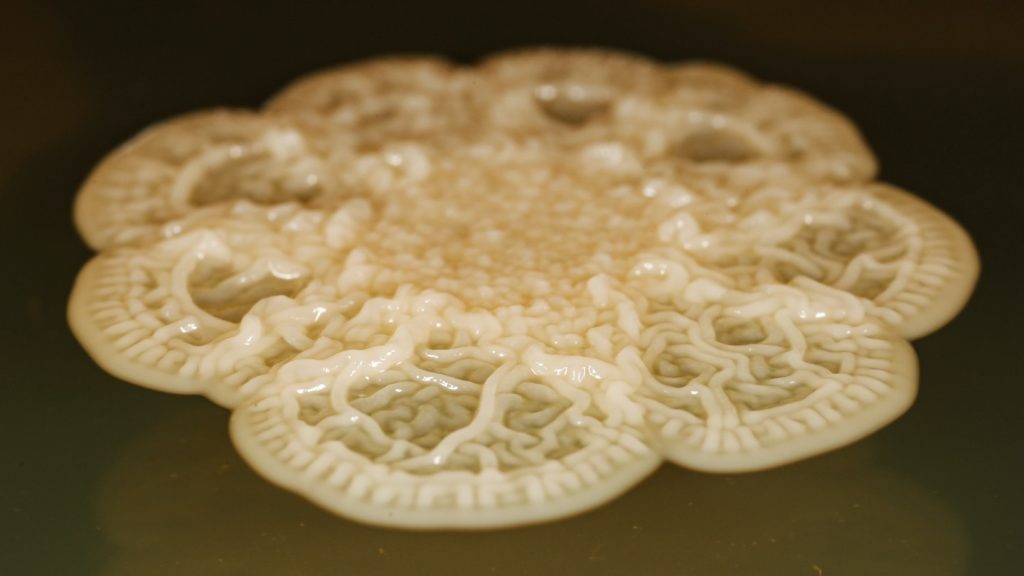Researchers have discovered a unique bacterium, Corynebacterium matruchotii, which exhibits an unusual method of reproduction. Unlike most bacteria that split into two cells, C. matruchotii divides into as many as 14 cells simultaneously. This strategy allows the bacterium to quickly monopolize the human mouth, where it typically thrives. The filamentous bacterium resides in plaque near the gum line and was observed splitting into multiple daughter cells during a study of live microbial communities in the mouth. This rapid reproduction cycle enables C. matruchotii to claim territory and quickly repopulate areas in the mouth, even after brushing.
The researchers were amazed by this unique reproductive strategy and plan to further investigate how C. matruchotii forms a biofilm that other bacteria in the mouth bind to. Understanding this process could have implications for oral health and may offer insights into how certain bacteria persist and thrive in the oral environment. By rapidly expanding into fresh territory through its multiple simultaneous divisions, C. matruchotii is able to establish a presence in the mouth that is resilient to external factors such as brushing. This finding sheds light on the diverse mechanisms bacteria employ to colonize and maintain populations in different environments.
The video showcasing the division of a single C. matruchotii bacterium into multiple daughter cells demonstrates the rapid nature of this reproductive process. While other bacteria can divide many times to generate spores, no other known species divides into many daughter cells that immediately start growing and dividing on their own. This unique characteristic sets C. matruchotii apart from other bacteria and highlights the complexity of bacterial reproduction strategies. By studying this bacterium’s method of reproduction, researchers hope to uncover new insights into how bacteria interact and compete within the oral microbiome.
The study of C. matruchotii’s reproductive behavior opens up new avenues for exploring the dynamics of microbial communities in the human mouth. Understanding how certain bacteria like C. matruchotii are able to proliferate rapidly and establish themselves in specific niches could inform strategies for managing oral health. By investigating the formation of biofilms and the interactions between different bacterial species in the mouth, researchers aim to decipher the mechanisms that underlie the maintenance of a balanced oral microbiome. This research may lead to novel approaches for promoting oral health and preventing conditions associated with dysbiosis in the oral microbiota.
The discovery of Corynebacterium matruchotii’s unique reproductive strategy highlights the diversity of bacterial life and the complex interactions that occur within microbial communities. By observing this bacterium’s rapid division into multiple daughter cells, researchers have gained valuable insights into how certain bacteria can quickly establish and maintain populations in challenging environments such as the human mouth. Further research on C. matruchotii’s biofilm formation and interactions with other oral bacteria could provide valuable knowledge for improving oral health practices and developing targeted interventions to modulate the oral microbiome. This study underscores the importance of exploring the intricate mechanisms that govern bacterial reproduction and survival in different ecological niches.















